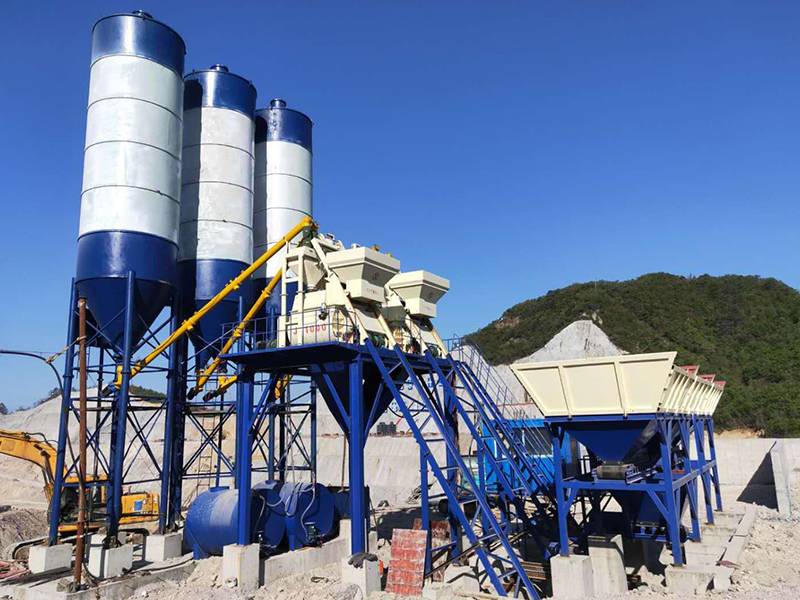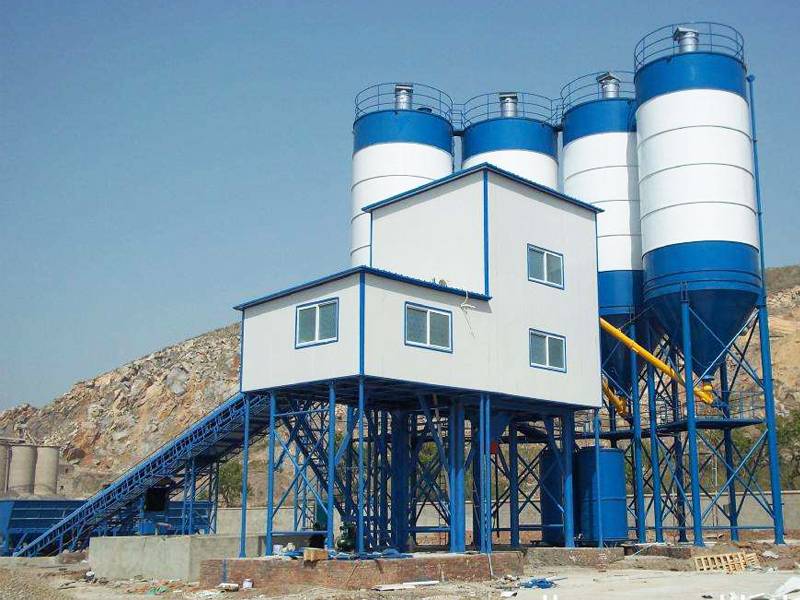Analysis of The Advantages And Disadvantages 0f Using Bucket Loading And Belt Conveyor In Concrete Mixing Plants
Concrete mixing plants are crucial in the construction industry. Bucket loading and belt conveyor are often used in the material transportation stage. Each of these two methods has its own unique advantages and is suitable for different working environments and needs. The following is an analysis of the advantages of these two material transportation methods:


Bucket loading
Advantages
1. High efficiency and flexibility: The bucket loading system usually has a high lifting rate, which can quickly lift the material from the bottom to the feed point of the mixer, which is conducive to improving the overall productivity of the mixing plant. At the same time, the system usually has a flexible and variable adjustment level, which can be adjusted according to different material characteristics and production needs.
2. Small size: Compared with belt conveyors, bucket loading equipment has a smaller footprint, which is conducive to saving site resources of mixing plants. In the case of a small mixing plant site, the advantage of choosing bucket loading is very prominent.
3. Strong adaptability: The bucket loading can adapt to the transportation requirements of a variety of materials and has a variety of placement methods, making it better adaptable in any environment.
Environmental protection and energy saving: The bucket loading method is fully enclosed, with no dust spillage, and cleaner. At the same time, due to the absence of dust and leakage, water flushing can be reduced, thereby reducing sewage generation and labor maintenance costs. In addition, due to the small footprint and short running distance, water, electricity and gas consumption is also less.
4. Not working during waiting: After starting up, the inclined belt is in operation during the waiting time, which will waste electricity, while the lifting bucket does not work during the waiting time, which is more energy-saving.
Disadvantages
1. Relatively low efficiency: Although the lifting bucket feeding system has a high lifting rate, its overall conveying efficiency may be slightly lower than that of the belt conveyor, especially when a large amount of material needs to be conveyed continuously.
2. Small footprint but limited height: Although the lifting bucket feeding equipment occupies a small area, its space requirement in the height direction may be large, which to a certain extent limits its application in certain scenarios with limited sites.
Belt conveyor feeding
Advantages
1. Continuous and stable: The belt conveyor can realize the continuous conveying of materials, avoiding the decrease in production efficiency and energy consumption that may be caused by intermittent conveying, which is conducive to improving the production reliability of the mixing station and reducing costs.
2. Long conveying spacing: The conveying spacing of the belt conveyor is long, which is suitable for large and medium-sized mixing stations or the need to convey materials over long distances. By increasing the conveying spacing, the number of material shipments and labor can be reduced, and work efficiency can be improved.
3. Large conveying capacity: The conveying capacity of the belt conveyor can reach 1280 cubic meters/hour, which can fully meet the production environment with various conveying capacity requirements.
4. Easy maintenance: The structure of the belt conveyor is relatively simple and it is relatively convenient to maintain. The conveyor belt can be easily replaced and maintained, which reduces the difficulty and cost of equipment maintenance and management.
5. Good adaptability: The belt conveyor has good adaptability and flexible transportation routes. It can be designed as mobile, lifting, telescopic, etc. to meet production needs. At the same time, the anti-slip pattern design of the conveying surface makes it difficult for aggregates to fall, and the transportation volume is increased.
Disadvantages
1. High cost: Because the structure of the belt conveyor is relatively complex and there are many parts, its manufacturing cost is usually high, so the price may be more expensive.
2. Large footprint: The belt conveyor requires a certain amount of space to install and operate, so its footprint is relatively large, which may be a disadvantage in some scenarios with limited sites.
Comprehensive comparison
1. Efficiency and cost: From the perspective of efficiency, belt conveyors usually have higher conveying efficiency; from the perspective of cost, the price of the lifting bucket loading system is more affordable. Therefore, it is necessary to weigh the specific needs and budget when choosing.
2. Site adaptability: The lifting bucket loading equipment occupies a small area but is limited in height, which is suitable for scenes with limited sites but sufficient space in the height direction; while the belt conveyor occupies a large area but has a long conveying distance, which is suitable for scenes with spacious sites and long-distance material transportation.
Summary
In summary, the lifting bucket loading and belt conveyor each have their own unique advantages in concrete mixing plant equipment. The lifting bucket loading system is suitable for mixing plants with low productivity requirements and limited sites due to its high efficiency and flexibility, small footprint, strong adaptability, environmental protection and energy saving; while the belt conveyor is more suitable for large and medium-sized mixing plants or scenes that require long-distance material transportation due to its advantages of continuous stability, long conveying spacing, large conveying volume, convenient maintenance, and good adaptability. In practical applications, mixing plants should choose appropriate equipment according to their own production needs and working scenarios to achieve the most ideal production efficiency.











